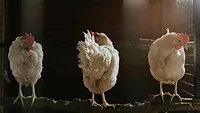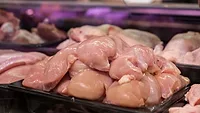Study Links High Winds to Campylobacter Spread on Chicken Farms

Credit: James Cheney via Pexels
A study conducted by Washington State University researchers found that high winds increased the prevalence of Campylobacter among outdoor chicken flocks. The researchers are calling attention to their findings so that organic and free-range chicken farmers whose flocks are exposed to the outdoor environment can better mitigate the food safety risk of high winds.
Observations of chicken farms in the U.S. West showed that about 26 percent of individual chickens at open environment farms had the pathogen, which included organic and free-range chicken farms. High winds the week prior to sampling and the farms' location in more intensive agricultural settings were linked to a greater prevalence of Campylobacter.
To help reduce Campylobacter exposure, the researchers suggested farmers consider installing windbreaks and watching weather patterns, so they can bring chickens inside during periods of high winds that could blow bacteria onto their farms from nearby fields and livestock areas.
The researchers tested chicken feces taken from 27 farms in California, Oregon, Washington, and Idaho. They took samples at most of the farms once a year for three years. They found that 69.4 percent of the flocks at these farms had some instance of campylobacter.
Researchers also interviewed the farmers about their management practices as well as types, breeds and ages of their chickens. Only 11 of the farms in the study were officially certified organic producers, but all of the farmers avoided using chemicals in their flocks, including antibiotics, vaccines, or medications.
In addition to monitoring and responding to wind patterns, the researchers suggest farmers establish a professional relationship with a veterinarian to get their flocks checked and monitored on a regular basis. The study underlines the importance of mitigating pathogen contamination in the absence of non-organic interventions.
Looking for quick answers on food safety topics?
Try Ask FSM, our new smart AI search tool.
Ask FSM →








